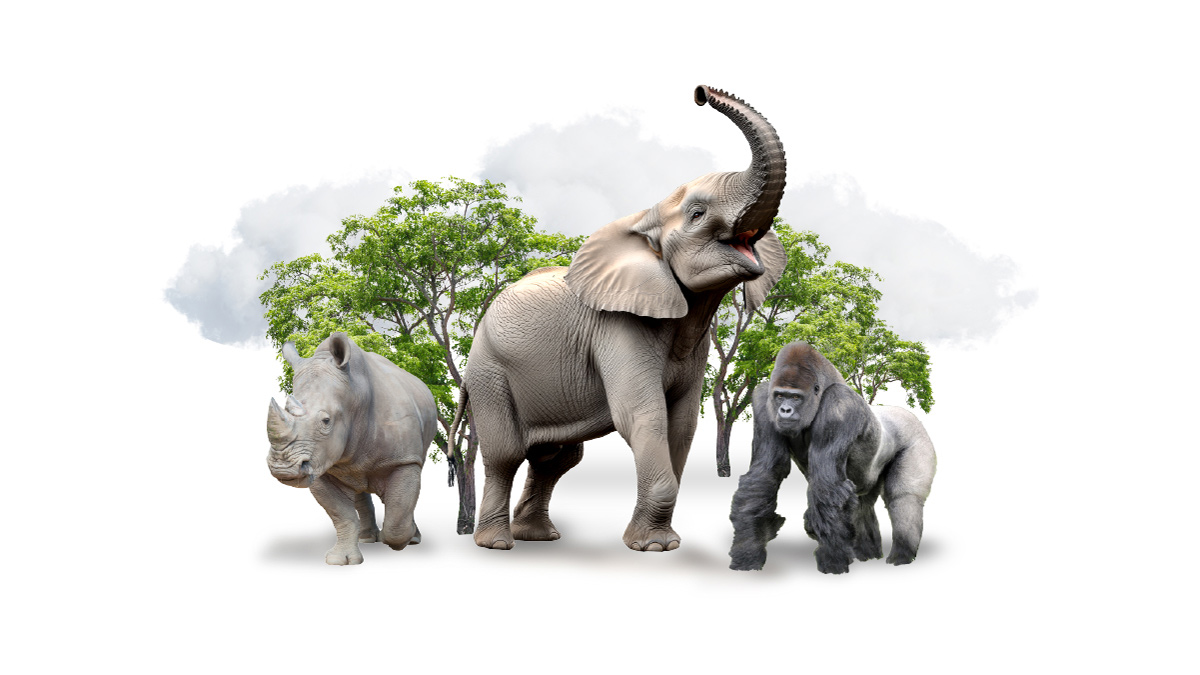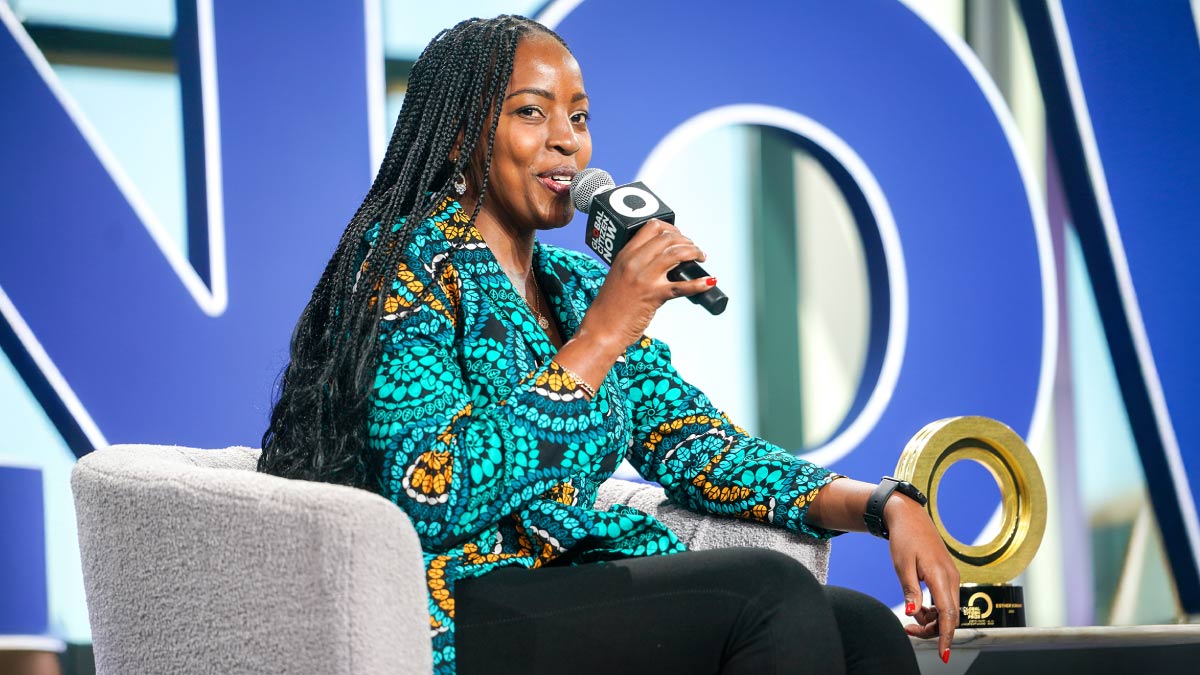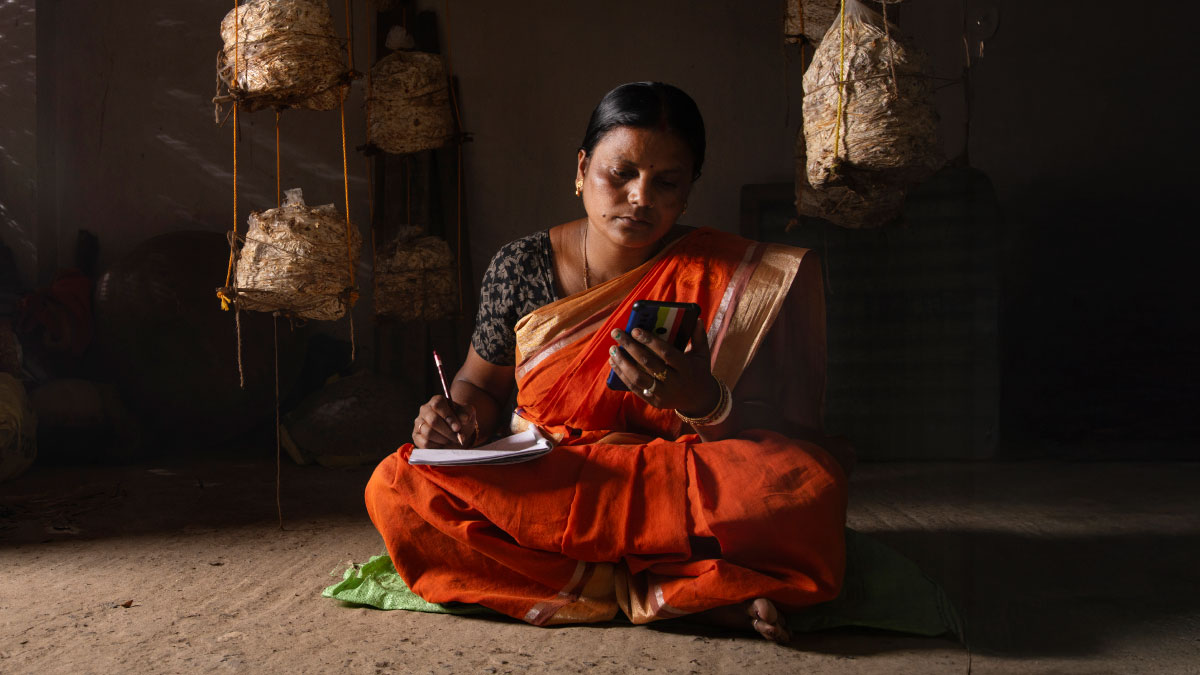In 2015, the rhinos of South Africa’s Sabi Sand Nature Reserve were under relentless siege.
Every night, poachers would break the perimeter of the reserve to target the majestic animals. Not for food or sport but for the rare rhinos’ horns, which in some cultures are believed to possess healing powers (in fact, they are made of keratin, the same as human fingernails).
The result? A perfect storm in which limited local economic opportunities mixed with high black-market prices. Add in outnumbered, or worse, outgunned park police, and these natural treasures were being pushed towards extinction.
A solution was needed, quickly.
“At that time, it was a desperate situation,” said Sophie Maxwell, CEO of Connected Conservation Foundation (CCF), a nonprofit that for 10 years has partnered with Cisco to use digital technologies to help save endangered species in Africa and beyond.
“Forty-five rhinos had been recently poached in Sabi Sands,” Maxwell continued. “That’s when Cisco and Dimension Data, its partner at the time, stepped in to help counter the poaching crisis in South Africa.”
With technologies like LoRaWan networks, Internet of Things (IoT) sensors, long-range thermal cameras, and automated fence alarms, results came quickly. According to CCF, by 2019 poaching in Sabi Sand had been reduced by 96 percent.
But Sabi Sand was just a starting point.
Today, Connected Conservation Foundation operates in 35 protected areas across 15 nations, from Kenya and Namibia to Papua New Guinea and Peru. And it protects gorillas, elephants, tree kangaroos, pangolins, leopards, and Andean bears (to name a few), while supporting local communities by enhancing education facilities, providing technology training, and building career opportunities.
Fran Katsoudas, Cisco’s chief people, policy, and purpose officer, shared her thoughts on the success of the Cisco/CCF partnership.
“For 10 years, Cisco and the Connected Conservation Foundation have been joined by the belief that we can use technology to leave our planet in a better place than we found it," she said. "We know that technology can help transform our world in big ways, and that includes helping to protect the world's ecosystems and endangered species. Now, as it accelerates, so can our impact!"
Stopping poachers before they strike.
Connected Conservation Foundation was the brainchild of Bruce “Doc” Watson, a co-founder of Johannesburg-based Dimension Data (now part of NTT DATA) who wasted no time getting his chief technology partner Cisco involved.
“Sabi Sand Nature Reserve became a test bed for all this technology innovation,” Maxwell explained. “It was about looking for solutions to detect threats, monitor ecosystems, and track the movement of wildlife and people across these reserves — to get an early warning of when incursions were happening so that when poachers were entering the reserve, they could intercept and apprehend them before they killed the rhinos to take the horns. And at that time there was no technology being used.”
Ian Robertson, Cisco’s global business development executive of cloud computing, has been with the project since its inception. At the 10-year mark, he’s proud of the program’s progress but keeps a clear focus on the future.
“We started in a good spot in the South Africa reserve,” he said, “but the scope of what we're doing has 1,000 percent expanded. Last year, 32 rare white rhinos were reintroduced at Sabi Sand, which recently reported 500 days poacher-free. And we’re protecting all kinds of animals now, not just rhinos. But the program is still evolving, and it’s more critical than ever.”
Unfortunately, poaching still rages in parts of South Africa and many other places where protected areas lack early warning solutions. But Kenya is one country where CCF and Cisco have built a success story. Today, landscape-scale solutions are deployed across 8 percent of Kenya. And excellent conservation management coupled with surveillance and monitoring technologies have played a key role in eradicating poaching. Between 2017 and 2021, rhino numbers rose by 6 percent.
Making conservation work for animals and people
For any conservation project, a holistic strategy is imperative. And Rebecka Turner, a Cisco senior global partner marketing manager who, together with Robertson, leads Cisco’s partnership with CCF, stressed the importance of moving past animals, ecosystems, and technology to include people.
“A big part of the story,” she said, “is how CCF is helping the communities. They bring in training and jobs for in-field technicians, and the technologies are now also helping facilitate more peace between the communities, the conservancies, and the animals.”
A key starting point is education, especially in raising awareness around the value of intact, living ecosystems — for example, to attract ecotourism, a key economic driver.
“We realized early on,” Robertson said, “that it’s not just about looking at the game reserve to protect the wildlife. Ninety-nine percent of those nearby communities are rural poor, and educational opportunities are limited. Cisco’s all about connecting the unconnected and powering an inclusive future. So, there was more for us to do.”
To that end, skills training became an essential element. And the Cisco Networking Academy, which has empowered more than 24 million people in 191 countries with networking and cybersecurity skills, was ready to step in.
“Cisco not only brought in the Networking Academy training courses,” Maxwell said, “but they’ve also donated digital access points and Wi-Fi to environmental community education facilities. So, we have enabled digital infrastructure for environmental campuses in Uganda, South Africa, and other places. They are training local people for a range of environmental jobs — like protected-area technicians, ecology monitoring, and tourism. It’s about creating the skills for nature-based local economies.”
Future threats, future innovation
Pressures on endangered animals continue to mount, whether from poaching, habitat destruction, the changing climate, or other factors. So, Connected Conservation continues to innovate and expand.
In 2021, Airbus Foundation joined forces with Cisco and CCF to contribute high-resolution satellite tracking, an “eye in the sky,” as Maxwell calls it. When combined with Cisco’s networking and IoT technologies, an ever-more precise picture of complex ecosystems emerges. This can include detailed environmental data on crop, soil, and climate impacts, along with deeper understanding of the animals’ movements and behaviors.
The goal is to reduce human/animal conflicts — for example, helping farmers to coexist with animals by knowing when they are most likely to eat or trample crops — while also providing valuable agricultural information.
“It’s about understanding the dynamics of the landscape and the changing environment, the droughts, the floods, and general ecosystem health,” Maxwell explained. “An understanding of where the flow and dynamics of nature interact with humanity is really important for stopping these conflicts.”
Case in point: Namibia’s elephants.
“We found that man-made watering holes are one thing that motivates the wildlife,” Maxwell continued. “And so, mapping the man-made water holes and tracking that against the elephant-collar data, you can understand what motivates their movements and where the elephants are going to move next.”
Of course, the more complex CCF’s operations become, the more data is generated — lots more. That demands the best security and analytics.
Robertson and Maxwell are exploring how newer technologies can contribute — especially as Cisco continues to infuse artificial intelligence into more of its products, along with the capabilities of Splunk, the analytics powerhouse it acquired last year. And of course, all future efforts will include rigorous cybersecurity, an ongoing concern as bad actors continue to gain in sophistication.
“Cisco is our lead partner, our founding partner,” Maxwell concluded, “and we're so grateful for everything they've done to support us and make this all happen. We’re excited to explore and continually harness the best future ecosystem of technologies that will help continue to facilitate our vision.”
To support CCF initiatives and get the latest news, visit connectedconservation.foundation.





